The global e-commerce market has undergone a revolutionary change in the last two years. Covid-19 has dramatically accelerated the departure of customers from brick-and-mortar stores and forced many companies to abandon their traditional business models.
In the years 2019-2020, we can see a clear increase in the number of global online transactions, which gives a strong impulse to a stable 8% growth in e-commerce retail sales in the world, forecast by 2024. The size of the global B2B e-commerce market was valued at $6.64 trillion in 2020 and is expected to grow in 2021-2028 with a compound annual growth rate (CAGR) of 18.7% (Grand View Research). Global internet sales are predicted to reach 22% of all retail sales in 2023 (compared to 14.1% in 2019, Statista). By 2040, 95% of retail purchases are likely to be made online and traditional retailing may be almost non-existent (Nasdaq). These data allow us to make a thesis – that the future, and in fact the present belongs to the e-commerce market – of which marketplaces are an inseparable element.
The marketplace is a virtual platform that allows you to buy and sell a variety of products and services (see our glossary for details). It is a shared space that provides sellers with an outlet and adequate visibility and offers buyers an exceptionally wide selection of goods or services. It can be said that the possibility of concluding transactions is a product of the marketplace. The mutual network of connections of each side of the transaction taking place in the marketplace is a key element driving scalability, and the scale guarantees the expected benefits to all users of a given platform. scalability and allowing marketers to easily survive various types of crises.
Marketplace categories (with examples)
Currently, there are several types of marketplaces on the market – Business-To-Consumer (B2C), Business-To-Business (B2B), P2P / C2C marketplaces, Horizontal marketplaces, Vertical marketplaces, Complementary marketplaces, Open marketplaces, Closed marketplaces.
B2B
In these types of marketplaces, producers and suppliers sell their products or services to other companies. The products offered may be raw materials, finished items, semi-finished products, as well as services, and business consultations. Some of the most popular B2B marketplaces include Amazon Business, Alibaba, eWorldTrade, Global Sources, IndiaMART, and Allegro Business. Currently, the B2B sector is one of the most profitable. According to Forrester, transactions on US B2B platforms are expected to reach $1.8 trillion by 2023.
B2C
Such marketplaces are collected by companies selling products or services directly to consumers. On these types of platforms, we can find a variety of goods, from clothes, and cosmetics to electronics, and cars – all kinds of courses and training, as well as travel. The most popular B2C marketplaces include: AliExpress, Zalando, Booking.com, Amazon, eBay, Etsy, Allegro, Mercado Libre, Alibaba.
P2P – C2C
This is an example of an internet platform – which connects people who want to sell or rent any type of product or service with people who need a given product or service. The instantly recognizable names are Uber, Etsy, Airbnb, Fiverr, Depop, Shpock, and Vinted, OLX.
Horizontal marketplaces
Marketplaces offer a variety of products from many industries. They are characterized by a wide range of products from the fashion industry through groceries to electronics. The perfect examples of the horizontal market are Amazon and AliExpress – you can find literally anything on their platforms.
Vertical marketplace
Narrow-focused marketplaces – focused on one industry. Vertical trading platforms are aimed at one market sector to serve a specific category of products to a target group of recipients. In this way, he becomes a master in it. Vertical Markets don’t offer a wide variety of products and services but focus on a niche to offer a specific product category like Etsy or Prilo.
See our Prilo case study!
Complementary marketplace
It is a kind of bridge between a vertical and a horizontal marketplace – these are platforms that extend into two or more industries that complement each other: Fashion and beauty – C&A Brazil.
Open marketplaces
They are those that accept virtually all sellers who want to sell products on the platform. The process of deploying sellers is extremely simple, and registration takes only a few minutes.
Closed marketplaces
The ones that conduct the selection process when accepting new sellers. They carry out a lot of quality checks – reducing the possible risk to buyers. Retailers interested in selling on these types of platforms face more regulations, but they get access to customers who trust them a lot.
Make yourself a marketplace
A good marketplace? So what? What features should a good marketplace have? Building and designing a successful marketplace can be quite a challenge – among others due to very strong competition, market dynamics, and more, and more demanding users.
The beginning of the process of creating a marketplace is actually business decisions. We are sure that the marketplace is exactly what our development strategy indicates and we have confirmed it by checking our business along and across. We also know a lot about the websites (future users) that are to benefit from the construction of the marketplace and we invariably claim that this is the future of our business, there is nothing else for us to do but start working with Product Discovery. Below are practical tips on good practices, proven standards, and favorite features. When designing a marketplace, we should focus on users’ goals and the assumption that the platform should support achieving them in an intuitive way for both sellers and buyers. These two groups of users will have completely different needs and expectations. Often the process will be much more complicated than in standard e-commerce, because, in addition to handling the transaction itself, it may be necessary to provide support for sellers, set standards, or at least handle disputes (eg Allegro). Undoubtedly, at this point, one can argue that a good marketplace depends on the number of engaged sellers, whether sellers will be involved and whether they will want to sell their products in it and thus drive sales – depends on many functions and possibilities offered by a given marketplace. On the other hand, the main goal of any marketplace is to attract as many customers as possible and provide them with a positive shopping experience.
When it comes to useful functions and good practices that we can list in marketplaces – they should be divided into those important for the seller, those invaluable from the buyer’s perspective, and general ones that are important for both of these groups.
Navigation
Good navigation is simple navigation, one that allows both buyers and sellers to navigate the platform as intuitively as possible. The menu itself, as well as filters and sorting should always be available and visible to the user. A properly planned navigation structure can: increase website traffic, raise search rankings, make it easier for users to navigate, increase the level of conversion, increase the time spent on the website, as well as the number of page views, and above all, improve the user experience and make it a pleasure to visit.
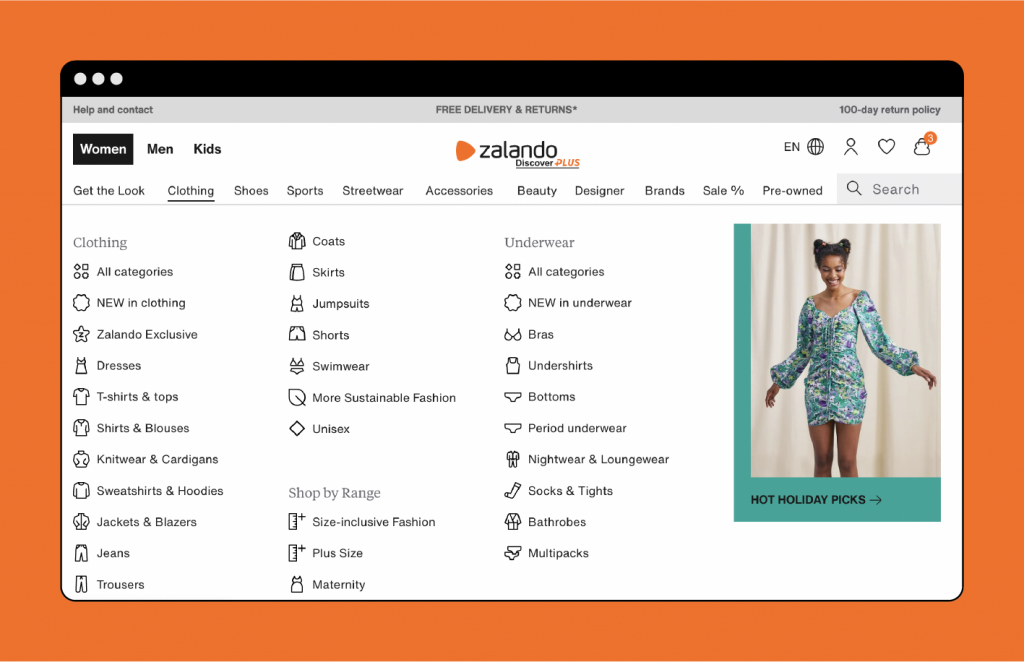
Mobile First
Smartphone users buy online – using instant transactions. The sooner the better. So, an extremely important issue is designing with regard to mobile versions of screens.
By 2025, almost three-quarters (72.6%) of internet users will have access to the web only via smartphones, which corresponds to almost 3.7 billion people – this data is a clear signal that the mobile first approach in designing – should be a standard and everything should be done to make the mobile views, navigation, filters, customer panel, the payment process itself – extremely intuitive in the mobile view – the largest number of users – that’s how he buys and he will buy.
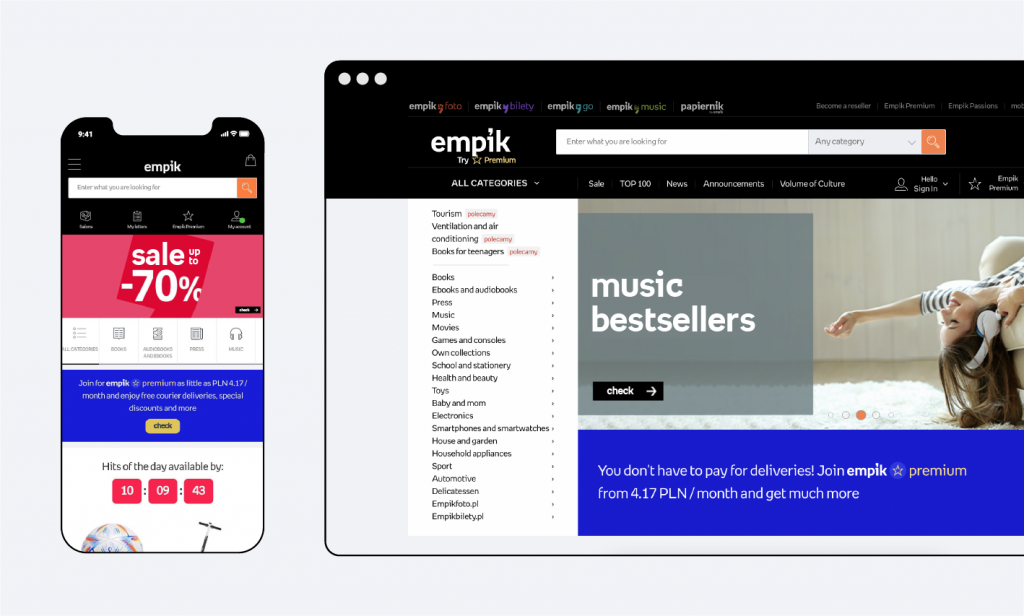
Personalization
It is worth taking care of a unique user experience tailored to his needs – an important issue is a personalization of the channel – to provide the user with information and products by his preferences.
For example, Airbnb, considered a people to people marketplace, monitors a user’s journeys, preferences and uses this information to offer them a personalized experience. Airbnb also offers personalized directions for places, restaurants, and more.
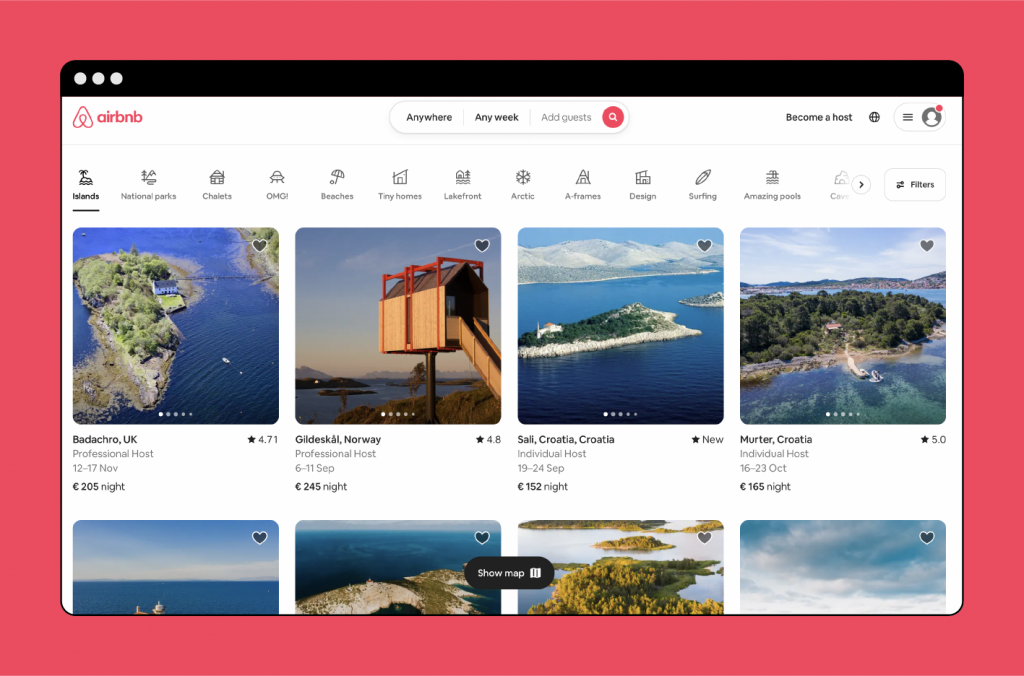
Search & Filtering
“The frustration with general product search results in an unacceptable level of churn and burnout: 68%, according to Forrester. The same proportion – 68 – applies to the number of sites offering poor search results sorting options, and a full 72% of sites are completely below search expectations. ” Smart Search will instantly help users find the product they are looking for. Advanced filtering options are a real must-have for every marketplace – thanks to them we can narrow down the search to a few key parameters at once. A properly created filter structure also provides a better user experience. Filters allow you to effectively browse and find products and content that interest the user, which has a positive effect on the conversion level of the entire platform. Additionally, filters eliminate the need for multiple search queries.
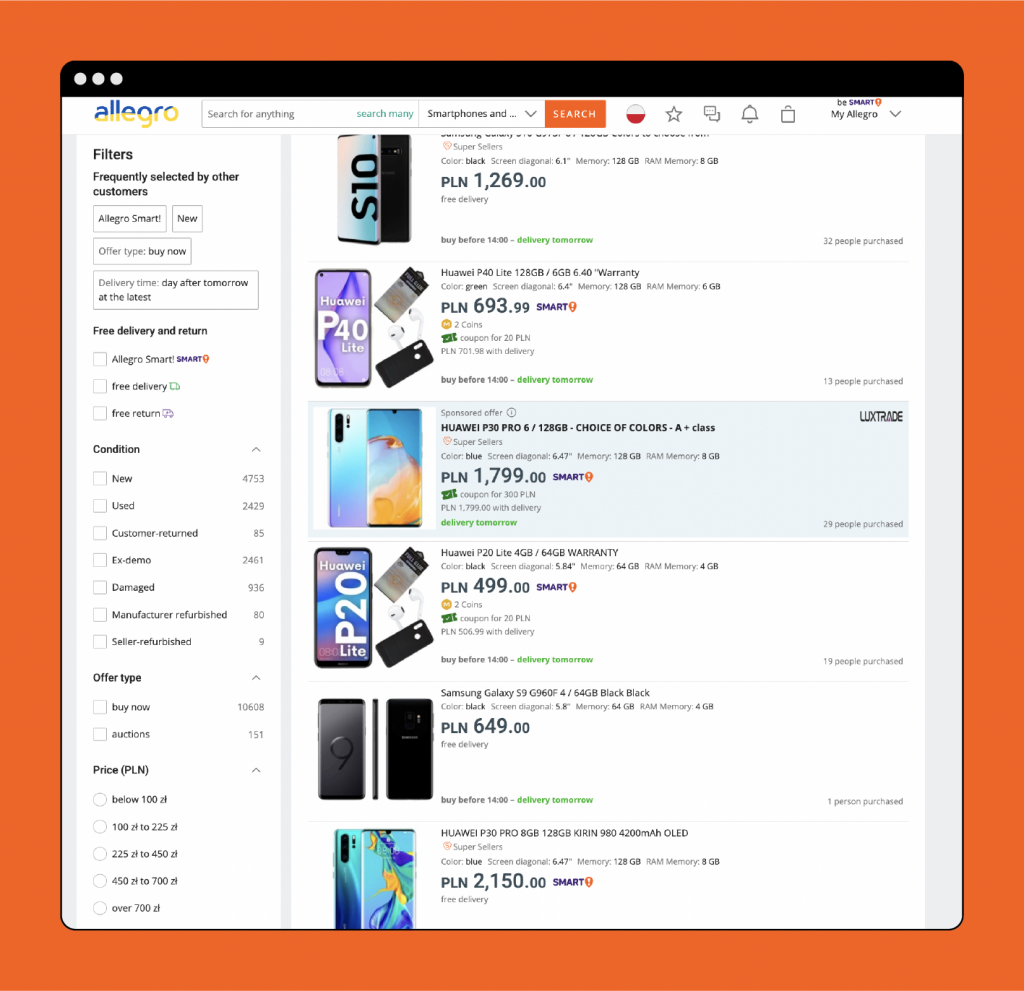
Product catalogs and listing
Catalogs and product lists – should be adapted to the needs of both sellers and potential buyers. Sellers should be able to efficiently manage catalogs and products, while buyers want a clear, non-overwhelming view – containing key information.
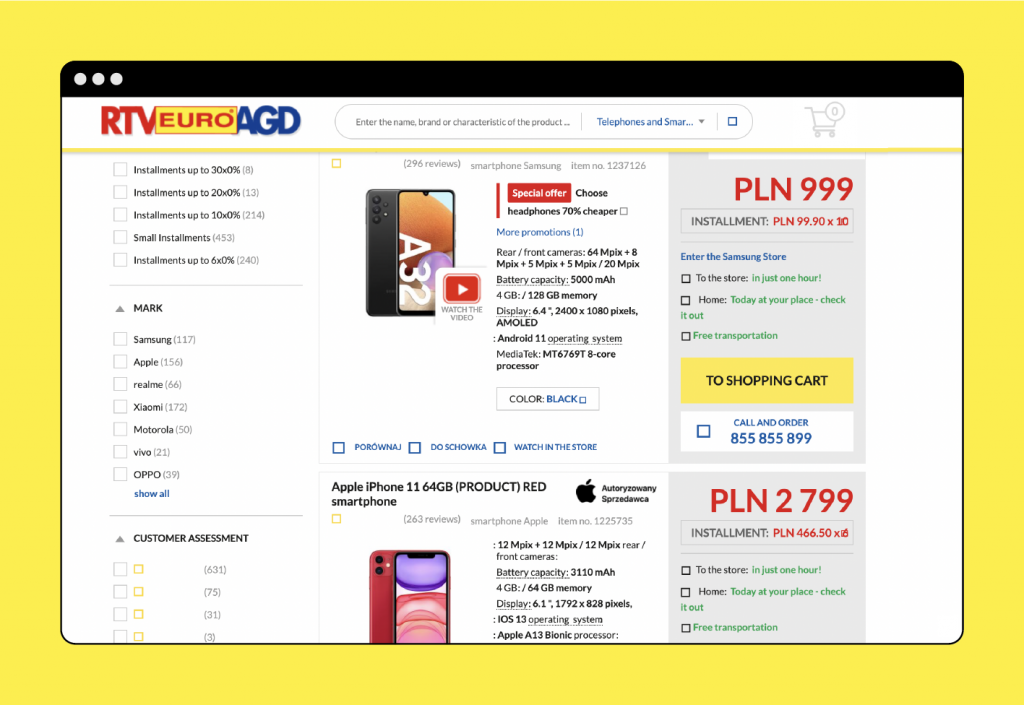
Product view
The product view is of great importance to the success of the entire marketplace. The key here is to provide enough information – which will make the user make a purchasing decision. It should include a sufficient number of photos of a high-quality product, preferably from different perspectives, the possibility of enlarging the images, a detailed description enriched with customer opinions, transparent information about the price of the product (including any additional fees related to the product), a selection of different product variants, such as color and size etc., visible product availability, possibility to share a link, clear way of adding a product to the cart and clear feedback after adding it.
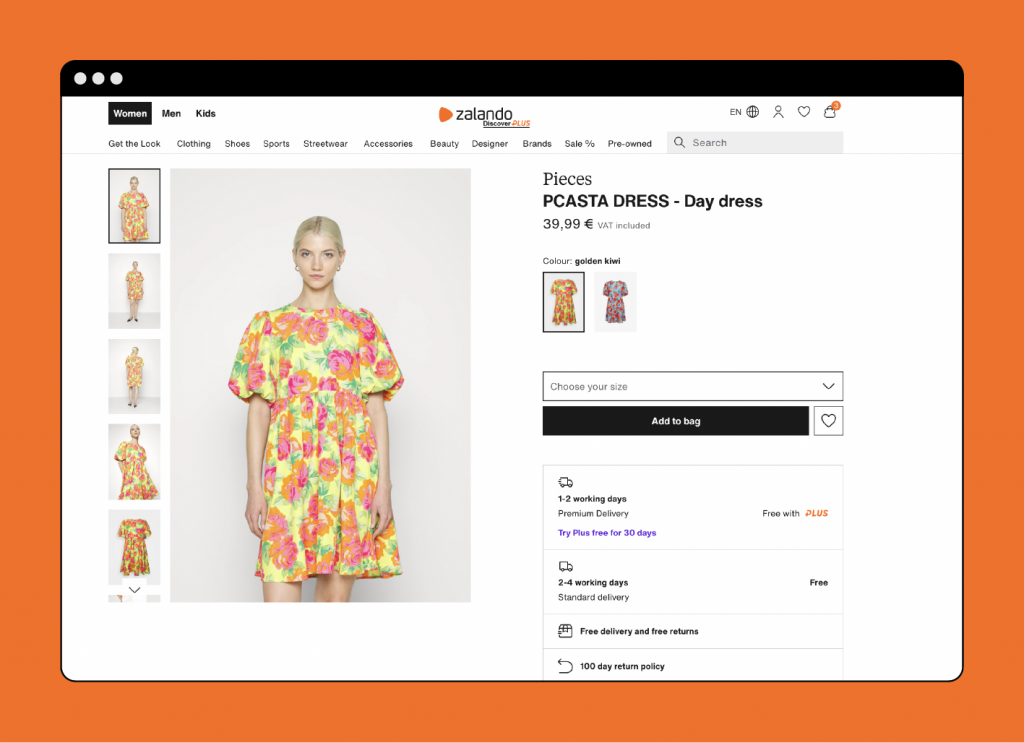
Support & chat
Both sellers and buyers should be able to send messages and be able to quickly contact the so-called support. This feature will improve the customer experience. A well-prepared FAQ – with frequently asked questions and transparent onboarding for new users – can increase user satisfaction.
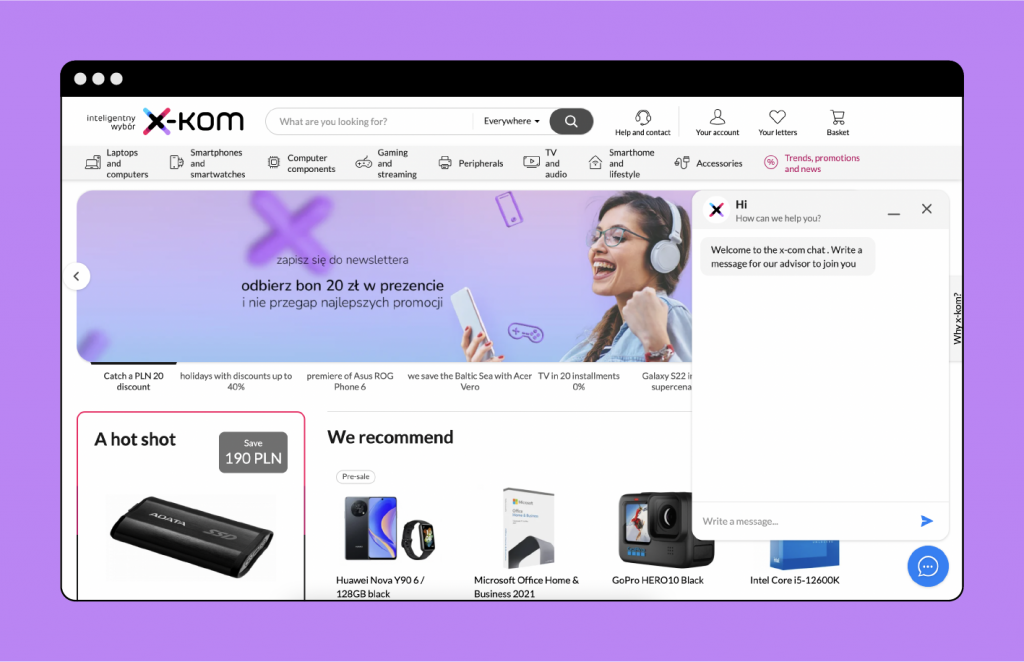
Payment
Safe payments are the basis of large marketplace platforms. The possibility of choosing many payments with various methods, payment in installments, deferred payment – this is the standard of today’s platforms, which also affects the credibility of a given platform.
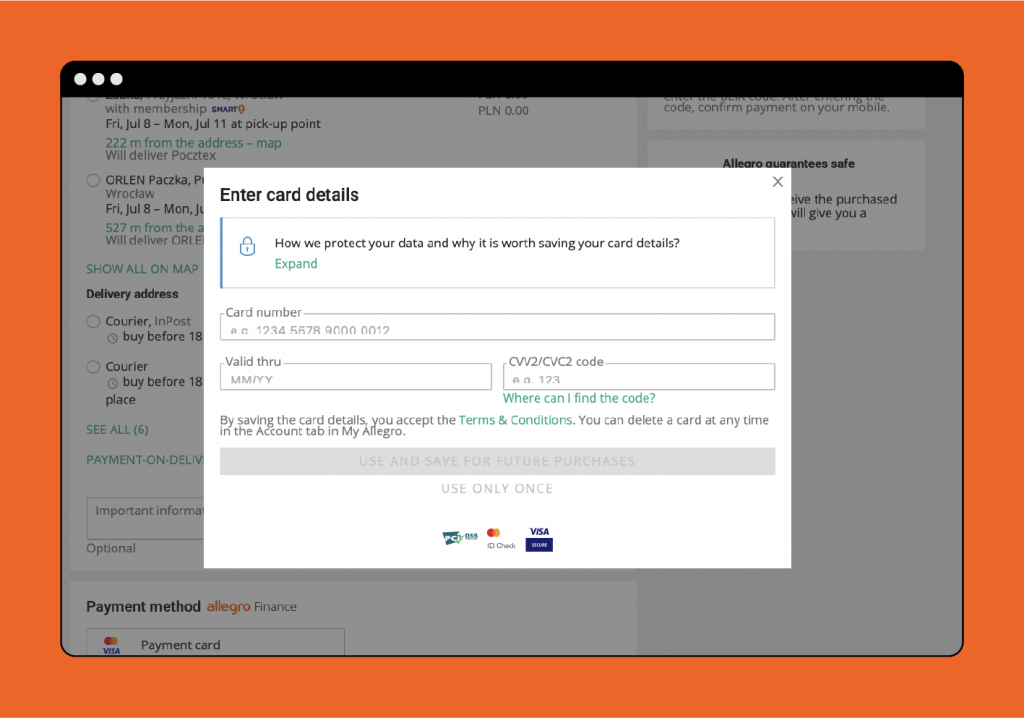
Features relevant to the buyer
Shopping cart
It has to be designed in the most intuitive way possible. At each stage, the user should have access to the previously selected products, as well as their parameters and prices. It is also recommended to shop without registration. Auto-complete option – will shorten the time of filling in the data. Cart page – must help the user in the final purchase decision. The user must be able to add or remove a product, he must see a detailed list of products including color, size, and quantity – he must see a thumbnail of the ordered item and the total cost and delivery costs. Too long and too complicated the purchasing process – will certainly result in the abandonment of the cart.
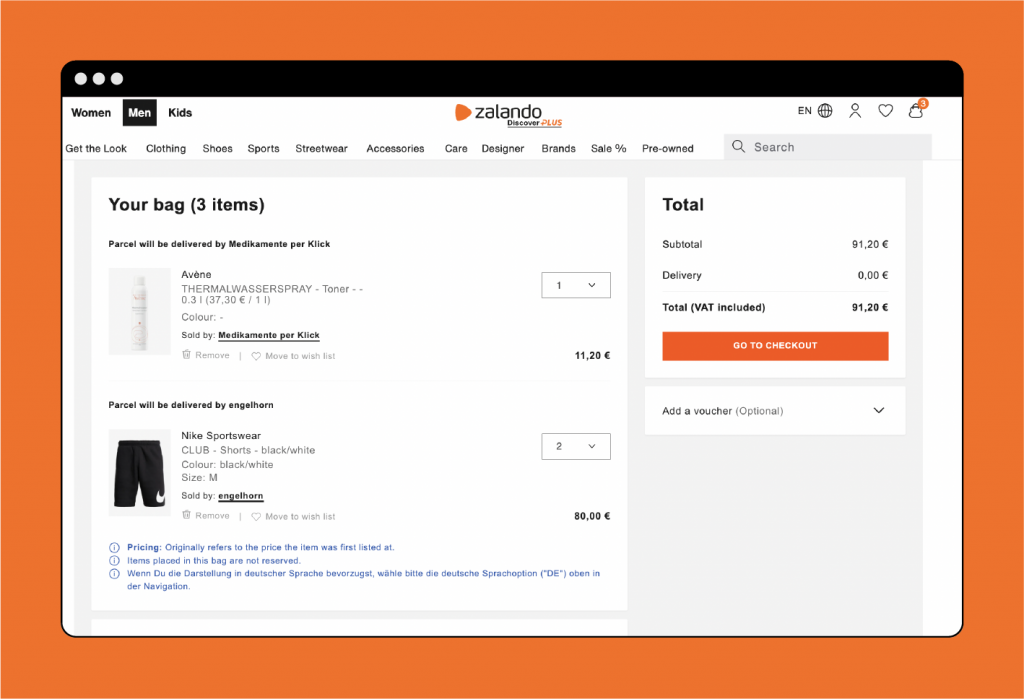
Easy return
Easy return of products and clearly defined terms of return – encourage users to buy. A transparent return policy increases the credibility of the marketplace and increases the level of users’ trust.
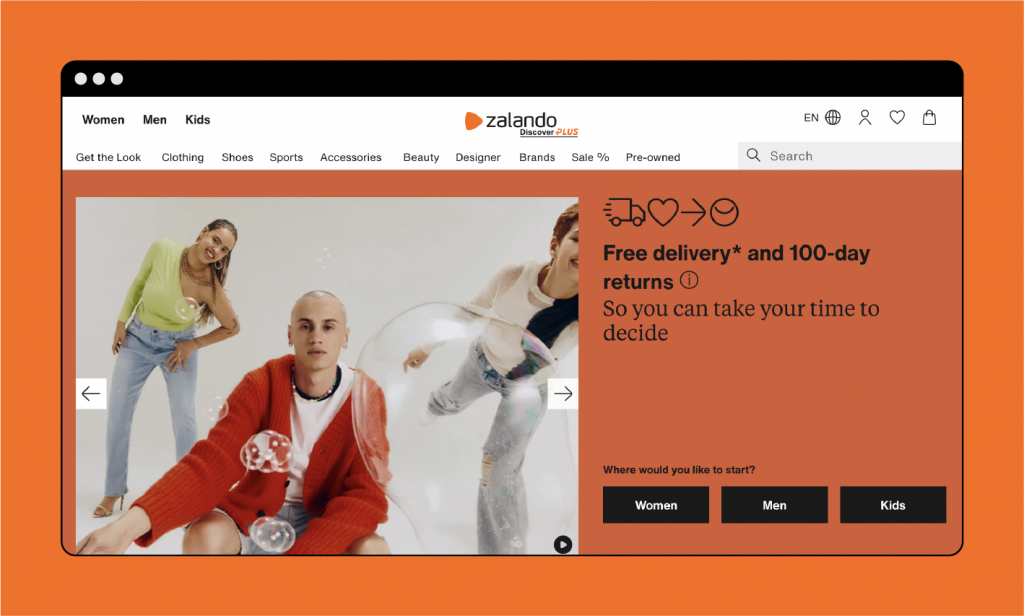
Customer account
Users log into the customer’s account for a specific purpose – that is why it is extremely important to design the most simple and intuitive paths that they can follow. Customers should be able to access their order history, add products to their wishlist, and track their orders. It is worth taking care at this point to simplify registration and all activities that require effort from the user.
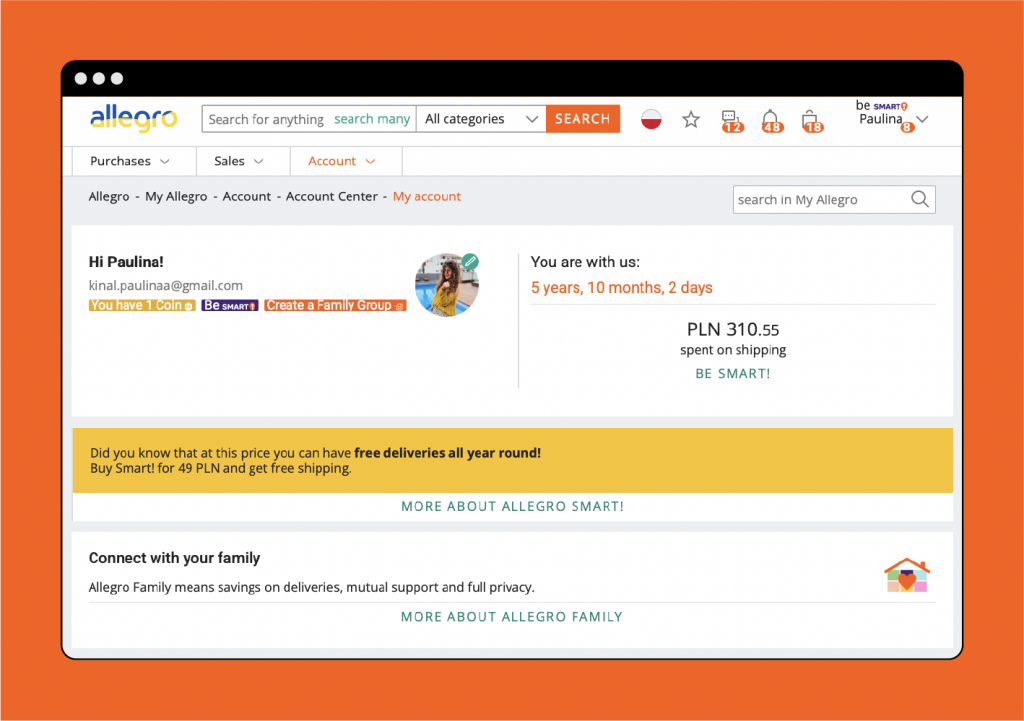
Compare products
The possibility of comparing individual products means that customers will not easily leave your marketplace – The automatic comparison function will effectively discourage buyers from visiting other stores to find what they need.
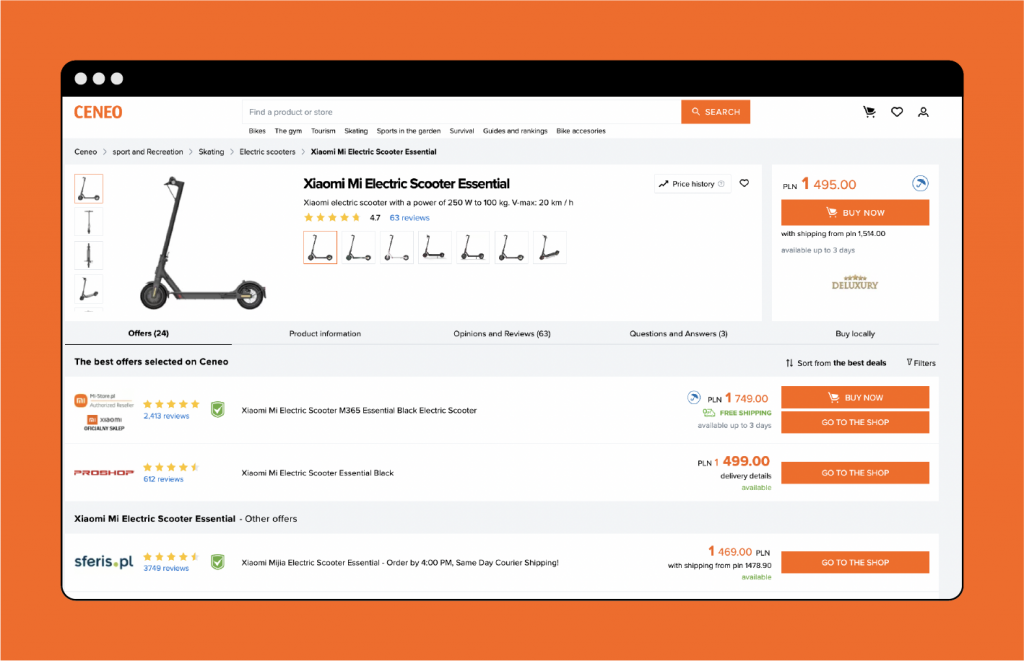
Features relevant to the seller
Merchant account
An extremely important element of each platform is the seller’s account and all functions related to it. The intuitive interface of the seller’s account, and the ability to manage and process orders – change order statuses, and necessary notifications – make the work of the seller easier and remind about important activities. In addition, sellers must-have access to their products, be able to edit them and manage the assortment. It is definitely a valuable piece of information that users usually move here only to perform a given activity – therefore it is extremely important to create appropriate and transparent paths for users assuming many scenarios.
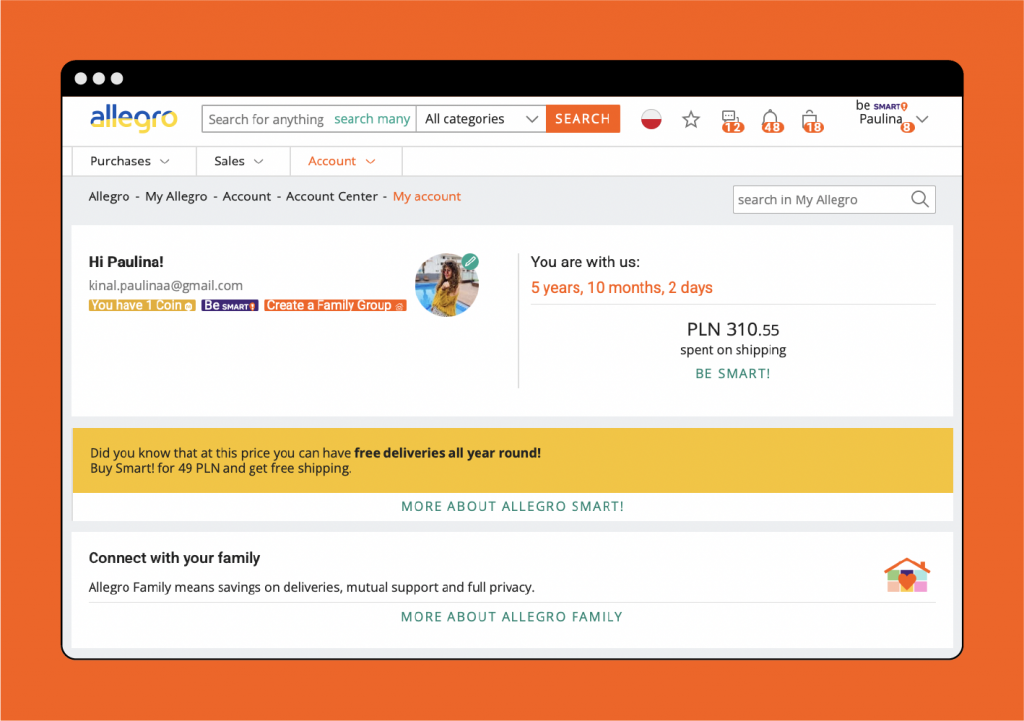
Data and Analytics
An extremely important function for every seller is the monitoring of data and statistics – that is why a screen with readable data presented understandably and an inviting interface – is a real must-have for every marketplace. Sellers should track information that is key to them – have continuous access to data, be able to download the necessary reports and other documents, and efficiently manage the data.

Marketing & Promotion of Products
The key element attracting potential sellers to our marketplace is undoubtedly any possibility of distinguishing the products sold. Personalized sales plans tailored to individual needs, as well as any promotions, discounts, and codes – which are of great importance for marketing campaigns and which increase revenues and customer loyalty. Many marketplaces also support smaller brands in development – by creating specially prepared promotional plans for them, which they can use to distinguish their own products.
If you want to know more about marketplace and digital click here and subscribe to our newsletter!
GOOD EXAMPLES OF MARKETPLACES
AMAZON
For years we have been forced to use its German version,
in 2021, Amazon – entered the Polish market. The American giant also improved its application. One-click purchases, – Same-day delivery, hundreds of thousands of products. Amazon undoubtedly shows how it is done and constantly sets trends. In total, the giant’s services are used by over 300 million customers around the world from 17 countries.

EBAY
The eBay platform is an international marketplace and one of the world’s largest auction sites. Selling on eBay is your chance to reach huge customers from many countries. It was built as a true peer-to-peer online marketplace and initially focused its activities primarily on linking buyers and sellers – currently, eBay has almost shifted towards a buy-it-now auction.
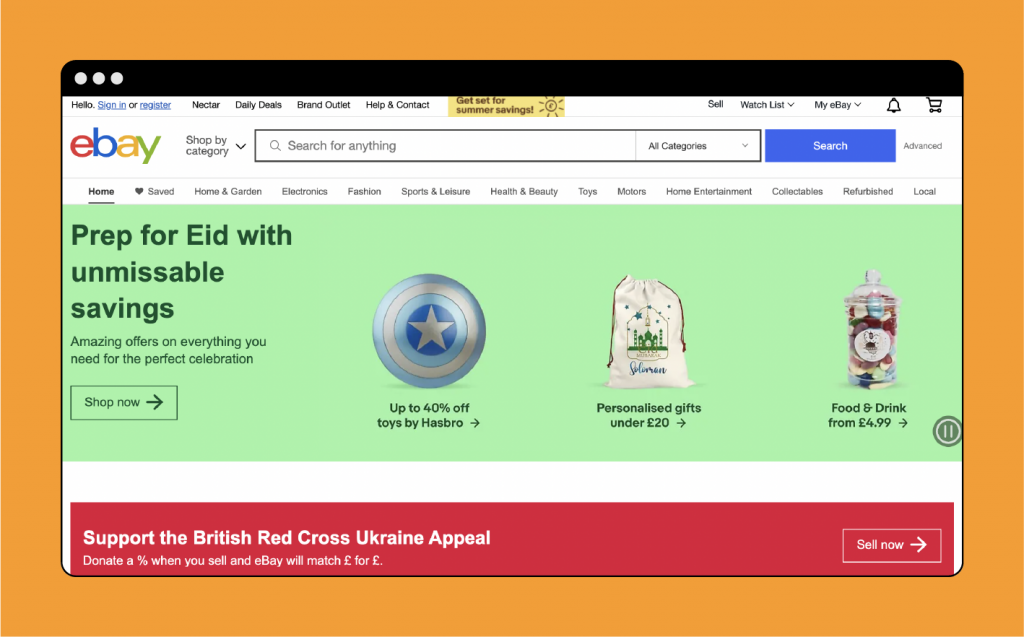
ETSY
Etsy is a dynamically developing P2P marketplace mainly focused on handicraft products, art, decorations, and products of the broadly understood creative industry. The essence of the action is close cooperation with social media and offering shopping experiences directly to Instagram or Facebook users.

ALIEXPRESS
Another giant – the Chinese sales service, belonging to the Alibaba Group. Its model is very similar to that offered by Amazon: a website where buyers can find thousands of products divided into different categories. The products belong to different sellers – and you pay the platform commission on sales.
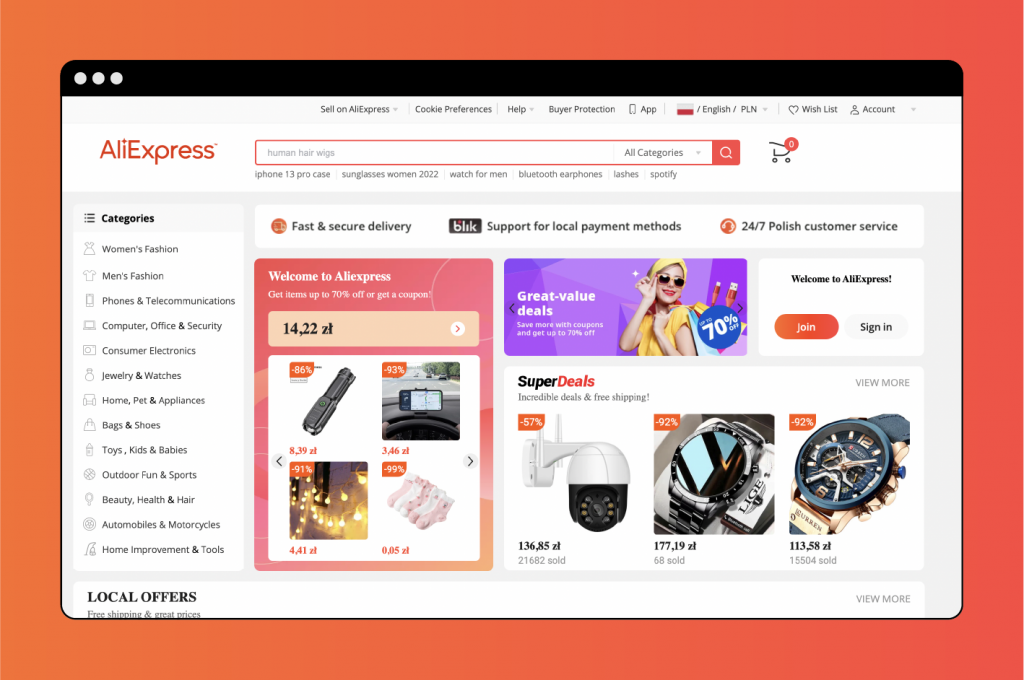
ZALANDO
Established in 2008 as an online store operating in the clothing industry, it quickly gained popularity and underwent a rapid expansion becoming a marketplace where independent producers could offer their products. Currently, Zalando offers hundreds of thousands of products one of the main challenges for the designers of this marketplace was to enable an intuitive way of searching and browsing products, filtering, and personalizing. Zalando is famous for using intelligent answering algorithms, presenting products as ready-made “lookbooks” sets, and working with influencers and the world of social media. It should be added that the performance of the website and mobile application also has a significant impact on UX, which complements the great experience of users of this website.
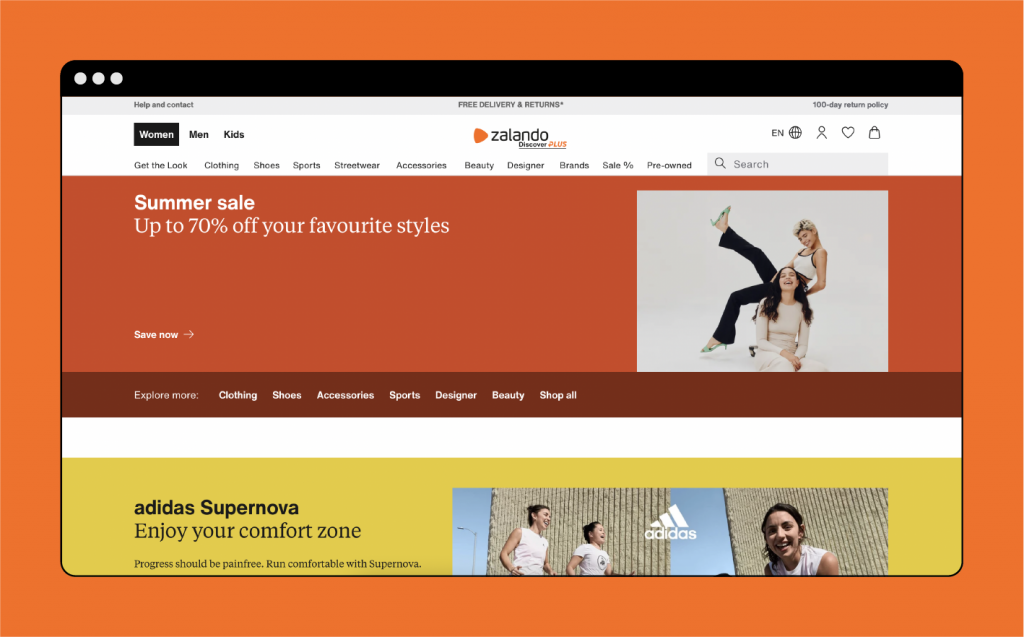
VINTED
Vinted is a P2P marketplace also operating in the fashion industry focused on the exchange of goods “second hand”. Designed with the idea of ”Mobile First” because it is the mobile platform that allows you to quickly go through the entire sales path – from taking photos of products, and listing the offer, through P2P chat, to the finalization of purchases. Intuitive simple design, advanced and rich filters, and categories allow for quick and intuitive browsing of products or saving them on the wish list.
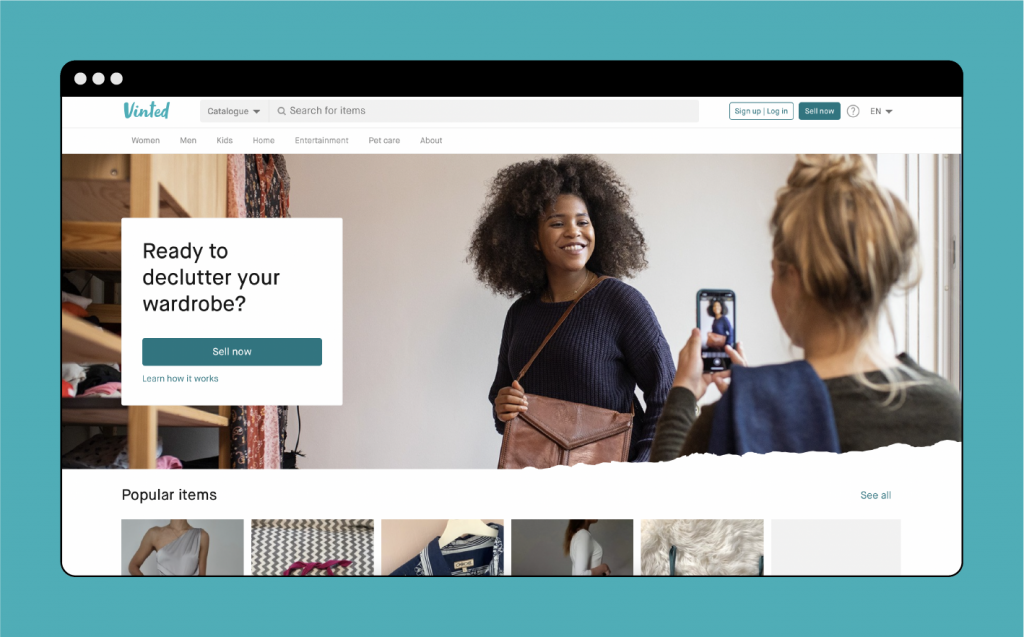
Marketplaces in Poland also constitute a large market:
ALLEGRO
Allegro is visited by 20 million users monthly. 90% of customers regularly shop on the website, and 86% of users mention Allegro as their favorite online shopping destination. Poles’ great attachment to the platform makes it usually the first-class choice. The platform itself had several turning points: in 2007 when it allowed sellers to set up their own e-shops and after introducing the Allegro Smart option, and combined it with delivery with parcel machines.
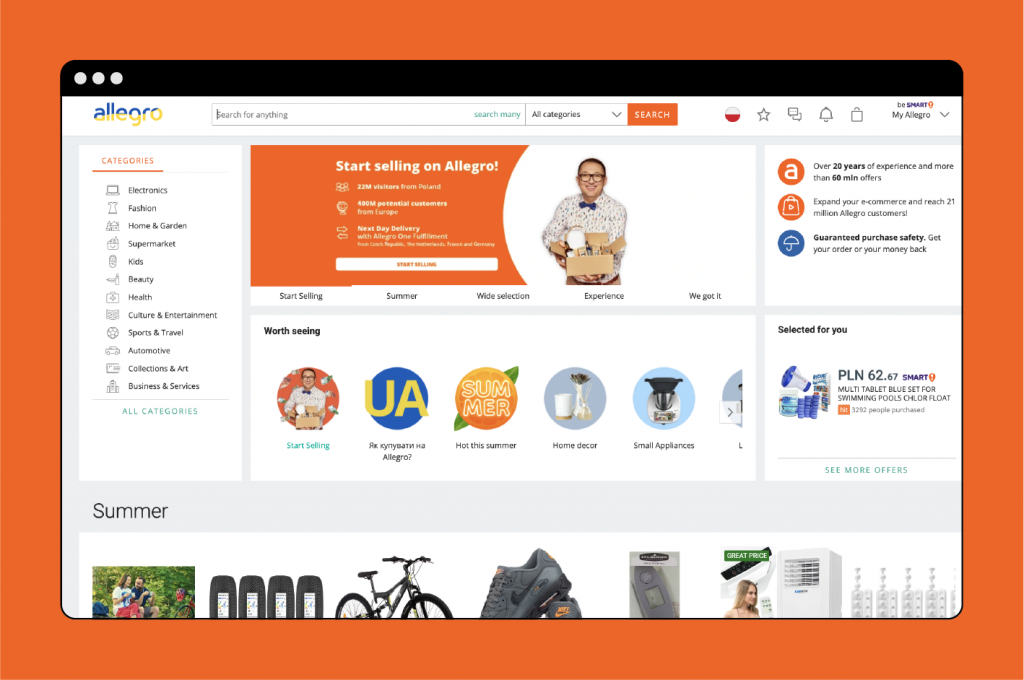
MORELE.NET
Marketplace associated primarily with electronic equipment. However, the Morele.net group expanded its operations – establishing several other online stores. Currently, on the platform itself, we can find a variety of items – from electronics to toys and cosmetic products. Morele.net does not charge a fee for listing the item for sale
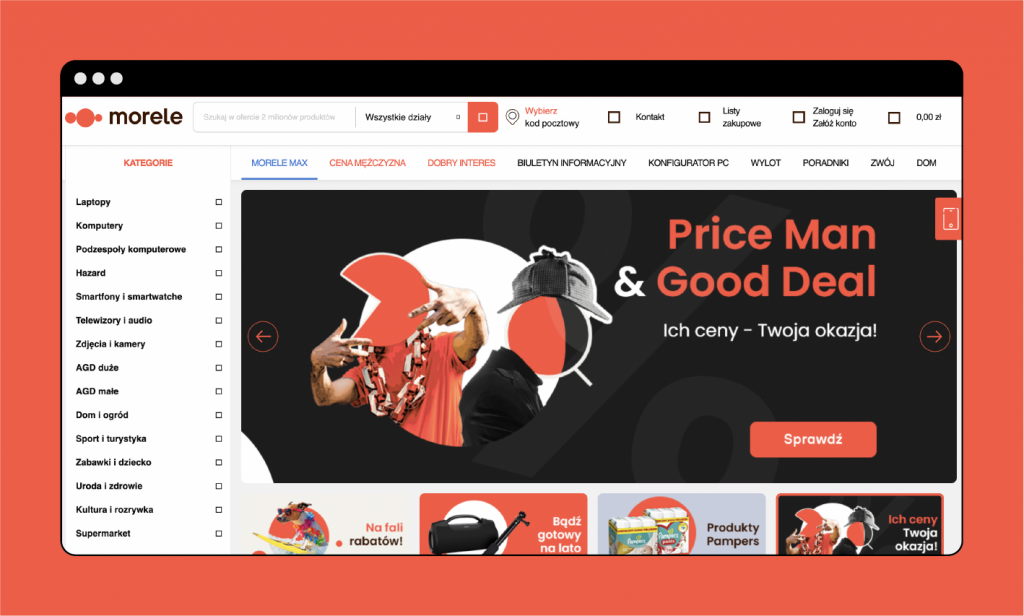
EMPIK
Initially is associated only with a stationary store. Currently, its range is very diverse – initially, the company focused its sales around books and music CDs. In 2017, the range of products was expanded and a marketplace was launched.

OUR CASE STUDY – PRILO
In recent months, we have faced the challenge of designing a platform for managing the transport process – Prilo. The transport marketplace allows you to experience the new organization of car transport. Both carriers and shippers use the platform.
Prilo is primarily a place where carriers will find current orders for transporting cars and avoid empty kilometers, and forwarders can choose the most advantageous offer from the carrier.
Choosing the best offer, constant contact with the carrier and car route monitoring are just some of the functionalities that you will discover on the platform. Check out Prilo case study here!


